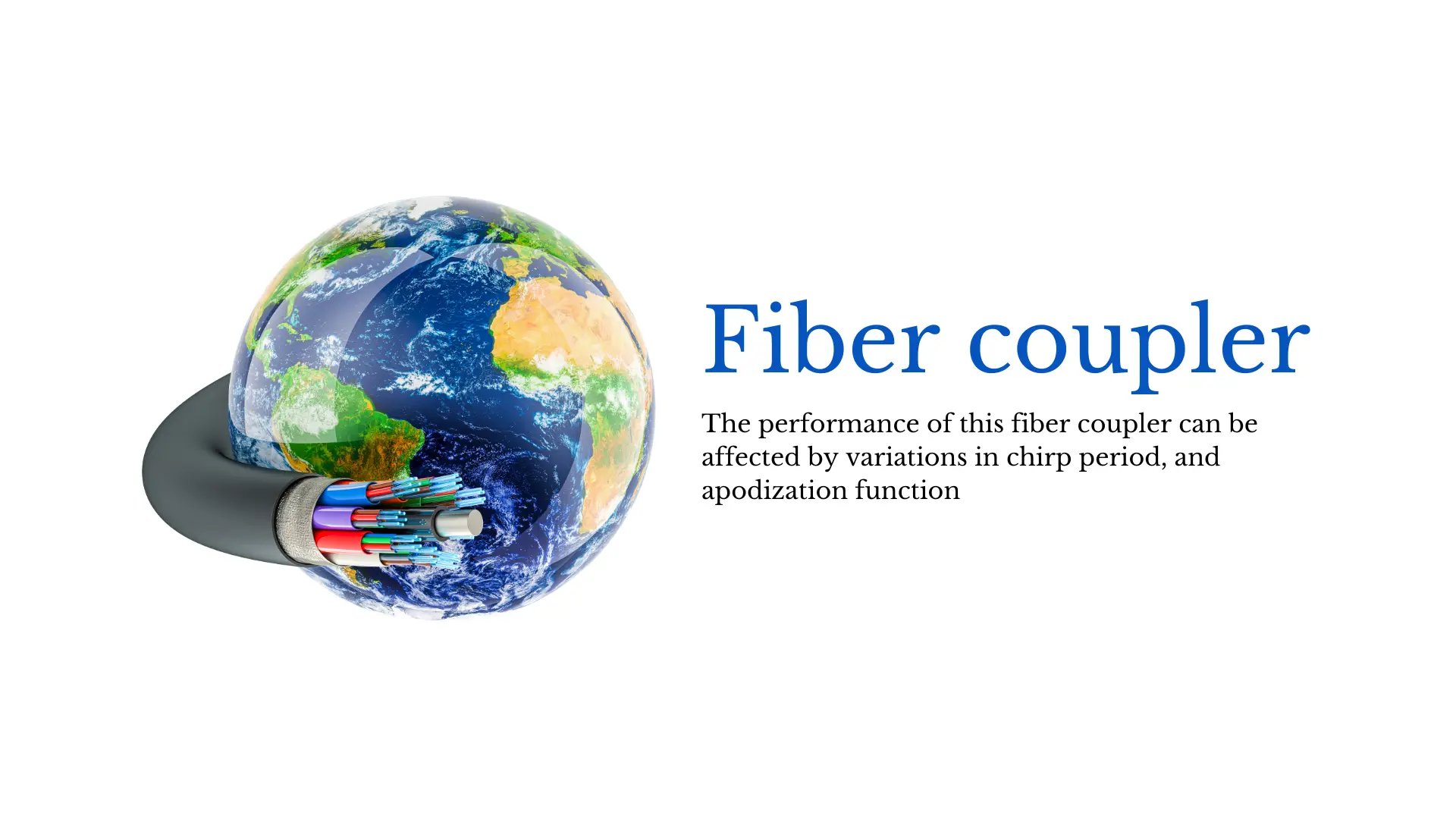First-order surface grating fiber couplers are devices in optical communication and sensing applications. The performance of this fiber coupler can be affected by variations in the chirp period and apodization function. The chirp period refers to the change in the grating period at a certain length, while the apodization function is used to control the grating intensity distribution.
The study mentioned by Mohammad et al. (2022) has shown the effects of these variations on the transmittance/reflectivity of the fiber coupler, the change in the grating index, and the transmission cross-section of the mesh. The simulation results show that the delay and dispersion of the fiber coupler are also affected by the grating wavelength, chirp period, and apodization function. In addition, the output intensity of the fiber coupler is simulated against the period, and the peak intensity variation is shown against the transmission range variation.
The chirp period and apodization function significantly affect the performance of first-order surface grating fiber couplers. These effects can be simulated and analyzed using OptiGrating simulation software to optimize the design and operation of fiber couplers for specific applications.
In summary, the first-order surface grating fiber coupler is an important optical communication and sensing device. Variations in the chirp period and apodization function can affect the performance of these fiber couplers. These include transmittance/reflectivity, grating index change, transmission mesh cross-section, delay, and dispersion.
The paper has demonstrated the first order surface grating fiber coupler under the period chirp and apodization functions variations effects. The Fiber coupler transmittivity/reflectivity, the fiber coupler grating index change and the fiber coupler mesh transmission cross-section are clarified against the grating length with the quadratic/cubic root period chirp and Gaussian/uniform apodization functions. The fiber coupler delay and dispersion are simulated and demonstrated with grating wavelength with quadratic/cubic root period chirp and Gaussian/uniform apodization function. As well as the fiber coupler output pulse intensity is simulated against the time period with the quadratic/cubic root period chirp and Gaussian/uniform apodization function. The fiber coupler peak intensity variations against the transmission range variations is also demonstrated by OptiGrating simulation software.
First order surface grating fiber coupler under the period chirp and apodization functions variations effects
Alsharef Mohammad, Mohammed S. Alzaidi, Mahmoud M. A. Eid, Vishal Sorathiya, Sunil Lavadiya, Shobhit K. Patel, Ahmed Nabih Zaki Rashed
By: I. Busthomi




